Meibomian Gland Dysfunction - Treatment & Management (Section 2)
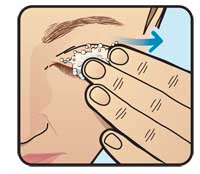
The treatment of Meibomian Gland Dysfunction essentially revolves round warming the waxed up glands so that it can be expressed and absorbed away by lid hygiene methods such as Blephasol, treating the bacterial overgrowth by using an anti-bacterial cleaner such as Sterilid, oral supplements containing fish and flax oil, such as Theratears Nutrition, to improve quality and quantity of meibomian oils secreted and reduce inflammation, hypotonic artificial tears to restore a normal tear osmolarity as the excess evaporation caused by the deficient lidid layer raises the "saltiness" of the tears, damaging the ocular surface. In addition we can use topical lipid layer supplements to top-up the deficient lipid layer, hopefully reducing evaporation. Tetracycline family drugs can sometimes help change the composition of the lipid secretions to lower their melting point.
(September 2019)
Matheson Optometrists has a new
tool in its arsenal to combat dry eye related problems. The process is called IPL (Intense Pulsed Light).
To Summarise, we can use:-
Hot Compresses/Cold compresses (eg Meibo Mask, Blephasteam Goggles)
Lid Hygiene - Cleaning (eg TLC Eye Wipes, baby shampoo etc)
Lid hygiene - Anti-bacterial (eg Sterilid Lid-foam or Sterilid Gel)
Nutritional Supplements (eg Theratears Nutrition)
Hypotonic, electrolyte balanced artificial tears (eg Meibo Tears and Theoloz Duo Gel)
Liposomal Phospholipid Spray (eg Eye-Logic)
Lipid layer supplements (eg Meibo Tears)
Drug Treatment (eg Doxycycline and cyclosporin)
IPL (Intense Pulsed
Light)
Hot Compresses/Cold compresses
Normally meibomian secretions have a melting point of 32-35 degrees C, ie they are liquid at normal eyelid temperature. In MGD it is higher say between 35-40degrees C, forming a wax which occludes the meibomian gland orifice.
Hot/warm compresses raise the temperature of the wax in the glands till it melts and is thus easier to express and clean away. Although hot wet flannels can be used for this purpose, they do not hold the heat for very long and there is always a risk of bacterial contamination if flannels are re-used
We prefer the use of a product called the “Meibo Mask”, which consists of a heat retaining gel, which is warmed in boiling water and then worn as a blindfold for 2-3 minutes before lid hygiene. As any heat treatment as a side effect ,can cause capillary dilation of the blood vessels of the ocular surface and eyelids which in turn, can facilitate the release of inflmmatory mediators such as histamine, leading to increased inflammation, it is important to cool the eyes down after treatment. A second Eyes-Pack kept in the freezer, removed for a couple of minutes before use, prevents this happening, by causing capillary constriction. The eyes are much less red and "puffy" as a result. The cold Meibo Mask is useful in cases of ocular allergy, such as in the Hay Fever season.
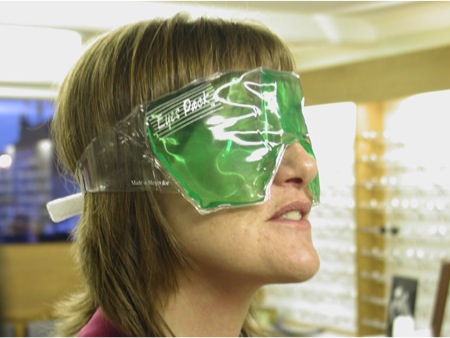 Buy Meibo Mask
Buy Meibo Mask
Lid Hygiene - Cleaning

Lid hygiene - Anti-bacterial
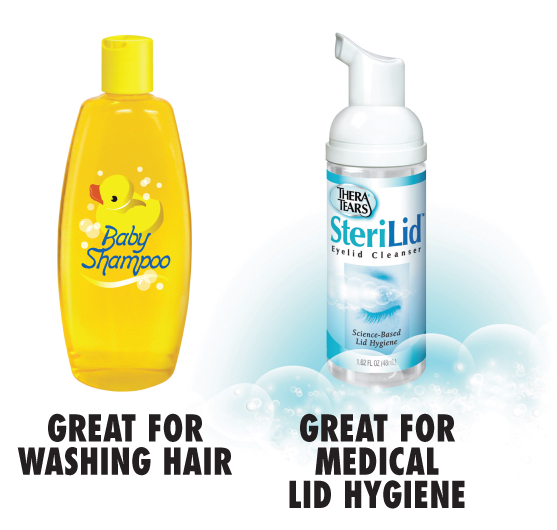 Buy Sterilid
Buy Sterilid
Nutritional Supplements
Omega-3 Supplements – reduce lacrimal and meibomian inflammation and improve meibomian secretions. Both long chain (fish oil) and short chain (flax oil) omega 3 fatty acids are required to efficiently produce good meibomian secretions. Gilbard's research pointed to a mix of 1.5g fish oil to 1.0g of flax oil per day as being optimal, the 2 working synergistically together, the total beneficial effect being greater than the sum of the individual effects of the fish and flax oil. This is the composition of the supplement he developed, Theratears Nutrition
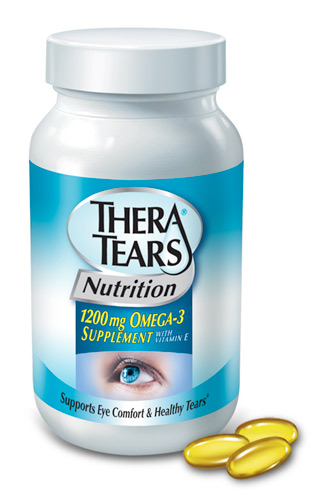 Buy Theratears Nutrition
Buy Theratears Nutrition
Fish oils should be processed under nitrogen to maintain freshness and molecularly distilled to remove mercury and any other heavy metals. Ideally flaxseed oil should not contain the ligand portion because phytoestrogens have potential to make eyes drier. Theratears Nutrition is the only ocular Omega 3 supplement that has had the plant hormones, the phytoestrogens removed.
 Healthy Eyes
Healthy Eyes
Hypotonic, Electrolyte Balanced Artificial Tears
Meibomian Gland Dysfunction leads to evaporative dry eye signs and symptoms. When the Meibomian secretrions are deficient, water from the tears evaporates at an increased rate resulting in over-salty, or hypertonic tears
One of the most significant consequences of this increased tear osmolarity or extra-salty tears, is that the surface of the eye loses water by osmosis to the more concentrated tear film. One of the most susceptible parts of the ocular surface to this damage caused by osmosis are the mucous secreting glands on the conjunctival surface, called Goblet Cells. Most of the Goblet cells lie on the “white of the eye” either side of the cornea. The mucous film that goblet cells secrete, coats the eye and “holds” the watery component of the tears in place, keeping the ocular surface hydrated and protected. So although the primary cause of the tear film change is excess evaporation due to reduced lipid secretions, the tear film instability is exacerbated by the consequent death of the mucous secreting goblet cells.
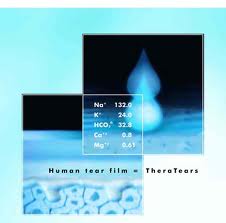
Dry eye specialist, Jeff Gilbard researched this problem for many years at the Schepens Eye Institute, and as a result developed a unique eye drop called Theratears, that mixed with the over-salty tears of the patient with evaporative dry eye to restore normal tear osmolarity, or saltiness. Fortunately when normal saltiness is restored to the tear film, goblet cells re-populate, with a consequent improvement in tear film thickness ensuing. This results in reduced signs and symptoms of dry eye.
Theratears drops also address other problems associated with dry eye, namely electrolyte imbalance and the increased friction between the eye-lid margin and the ocular surface (Lid-Wiper Epitheliopathy). In particular, there is an imbalance of the sodium and potassium levels afall in bicarbonate levels in dry eye that is addressed by the regular instillation of Theratears lubricant eye drops. The use of punctual plugs increases retention time of the Theratears drops, ensuring that their beneficial effects last for much longer.
The portion of the upper lid that is in contact with theocular surface is named the “Lid-Wiper” and “Lid-wper Epitheliopathy” is when this portion of the upper eyelid becomes traumatised and inflamed.
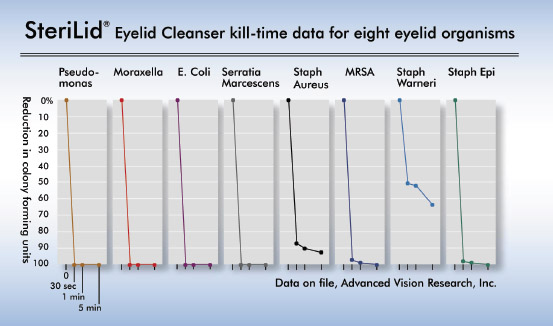

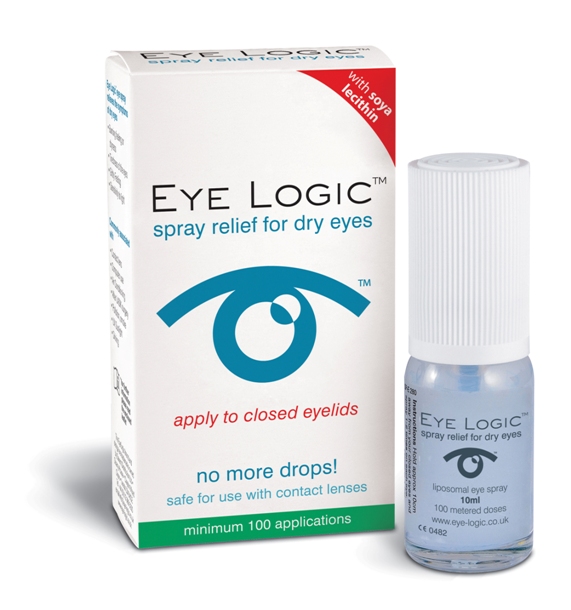 Buy Eye Logic
Buy Eye Logic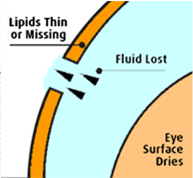
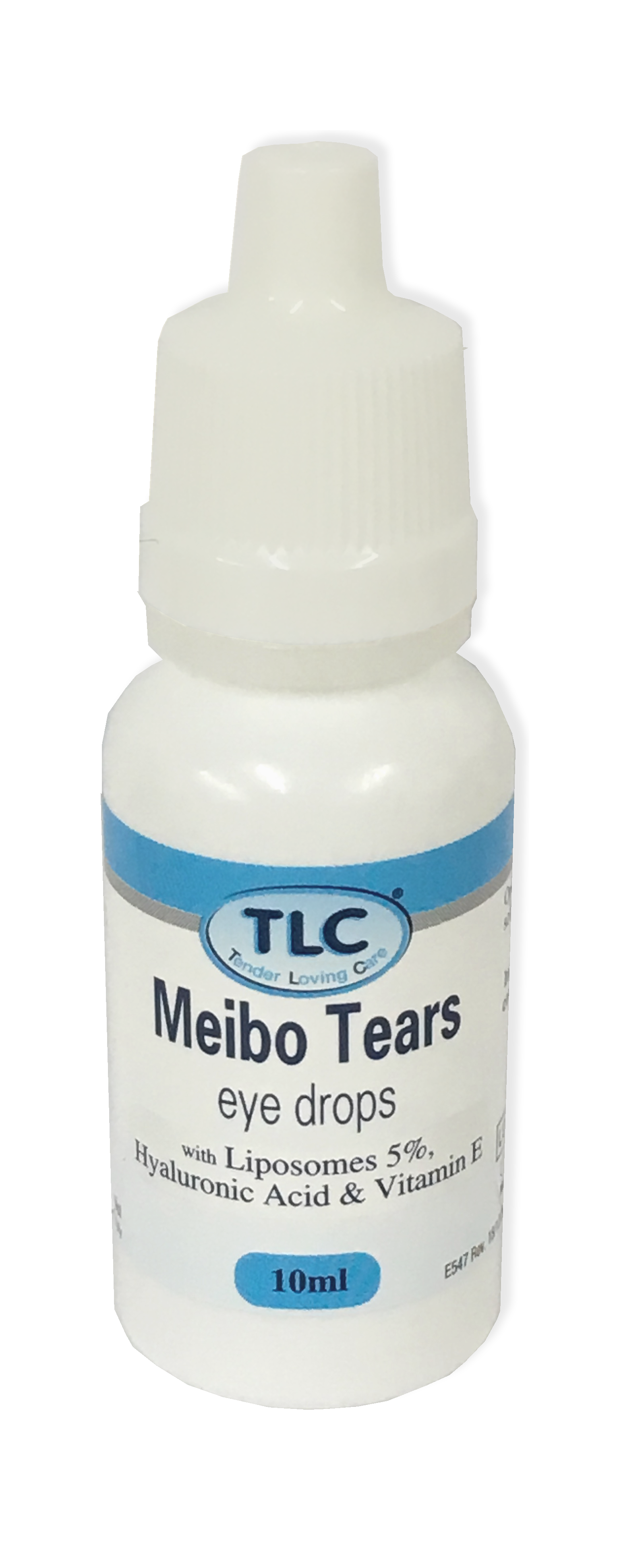 Buy Meibo Tears
Buy Meibo Tears